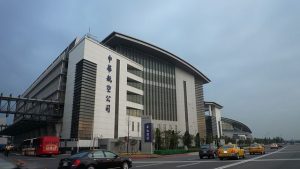 We know what gives you nightmares in China. And it’s probably not saber rattling in the South China Sea, either, is it?
We know what gives you nightmares in China. And it’s probably not saber rattling in the South China Sea, either, is it?
China’s real estate and its biggest lenders constitute the top holdings in the popular iShares FTSE China (FXI 24,02 -0,11 -0,46%) ETF. This is arguable the two sectors — housing and credit — that keep China investors up at night. On one hand, the economy is not growing like it used to and the debt burden is hard to quantify; danger levels are unknowns. On the other hand, China is pretty much a closed economy and is home to over a billion people, many of them now able to afford Teslas, apparently. The electronic vehicle maker sold $1 billion worth of vehicles in 2016. China is a powerhouse no portfolio should ignore.
If the housing story turns you off to China, Alex Wolf, an economist for Standard Life Investments, a $360 billion money manager with headquarters in the U.K., says the 2016 bubble is no more. “Reduced property investment and slower real estate services growth will weigh on growth in 2017, but…the excesses during this cycle were less than in previous cycles and therefore the macro impact will be less severe.”
In other words, for those who only look at China from very far away, the housing cycle has shifted again. We are in a lull. More like a roller coaster ride, we are sort of on a level track with a few hills. It’s no longer the Superman ride at Six Flags. At least not for now. Annual price growth for some 70 cities as measured by Beijing’s National Bureau of Statistics shows them to be flatlined. Developers are still not building “ghost cities”, those famous residential and commercial blocks built up over the years in anticipation of future rural migrant workers looking to become city slickers.
Wolf thinks the current cycle in housing is different than previous ones. This recent mini-bubble boom saw major price jumps in several cities. Shenzhen saw average prices rise by a whopping 43% last year. In 2013, the largest jump in real estate prices was 15%. Five of China’s tier 1 cities last year saw gains of 27%, nearly all of them along the “new China” east coast cities of Shanghai, Guangzhou and Beijing. The good news is that builders are not building right now. The perennial problem of oversupply in China, is on pause.
Wolf warns of increased private debt by both developers and mortgage holders. Some of the corporate debt is coming from off-balance sheet loans from mid-market banks. Many of those banks are traded in the A-Shares market, which makes the Deutsche Bank CSI China A-Shares fund (ASHR 24,53 -0,17 -0,69%) a risky bet. No one really knows what is in there. China’s government said on Thursday that it was cracking down on shadow banking in the system. Beijing has made a number of statements of late about curtailing growth in provincial lending and investing mechanisms that may not be prudent and could ultimately damage provincial economies, weighing on national GDP growth.
Standard Life estimates that China mortgage debt is just around 15% of total outstanding debt in China. Wolf thinks that if wealthy Chinese lay off real estate this year, they will spend more on discretionary items like travel. Wolf did not get specific on which items, however.

